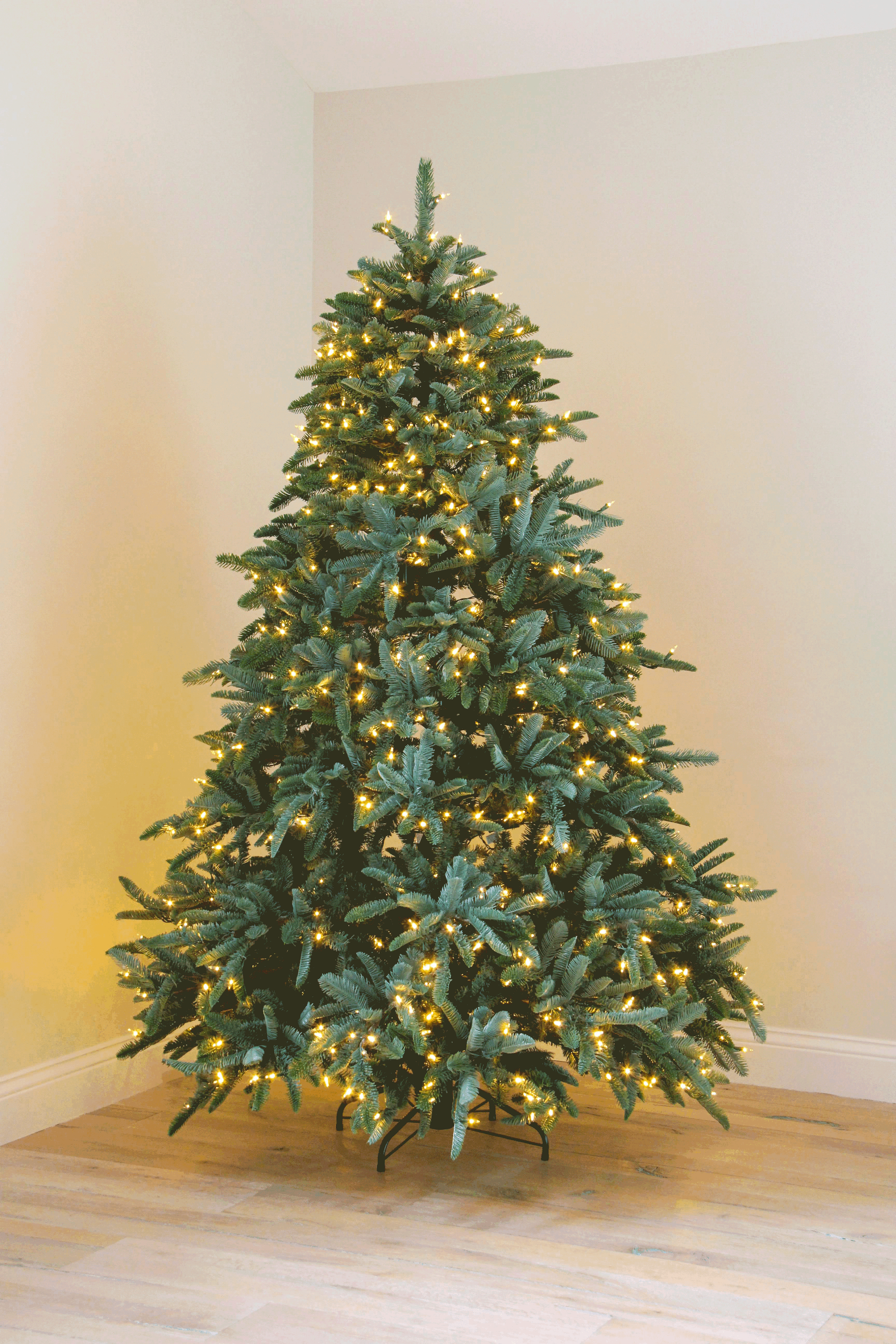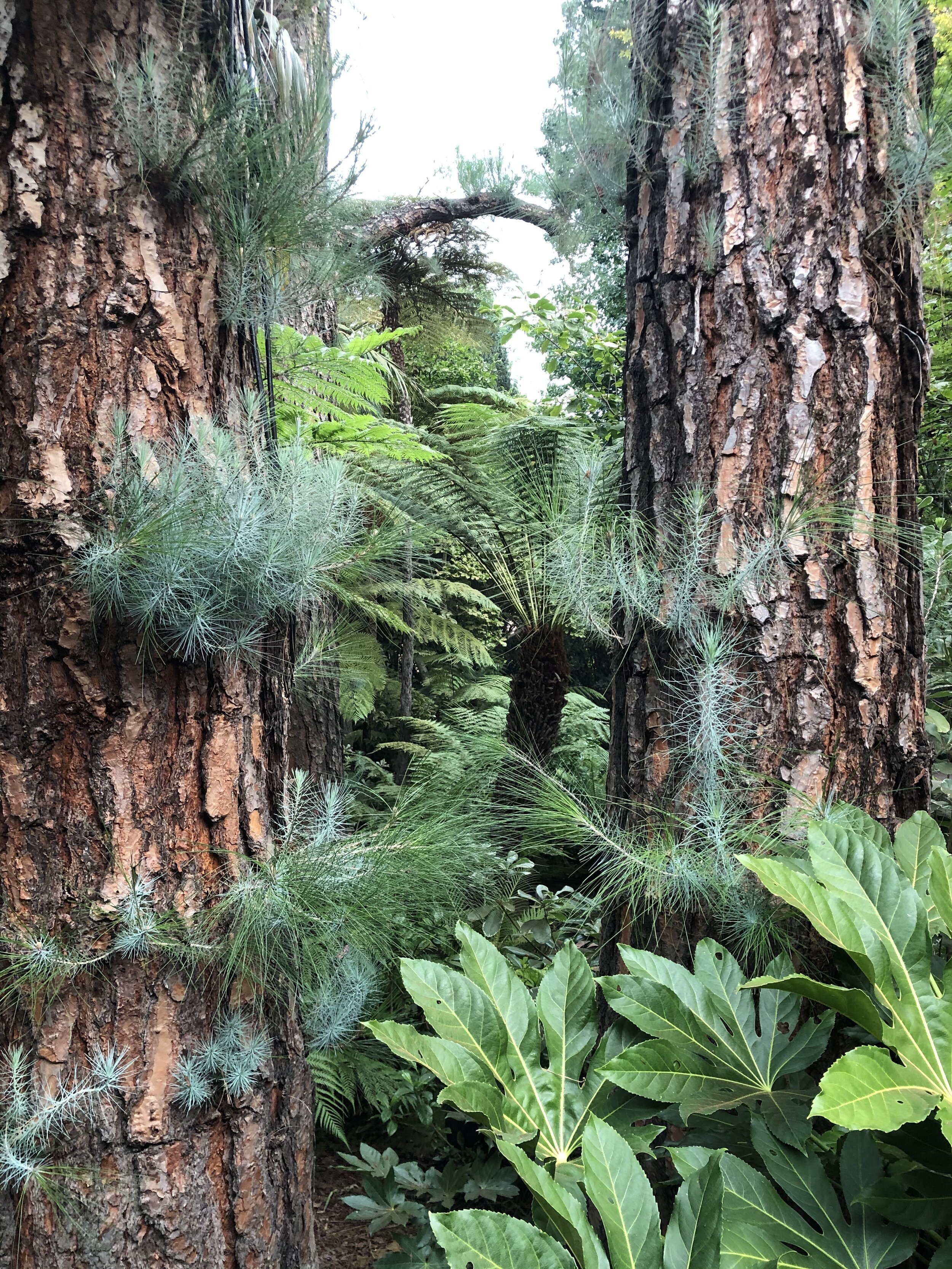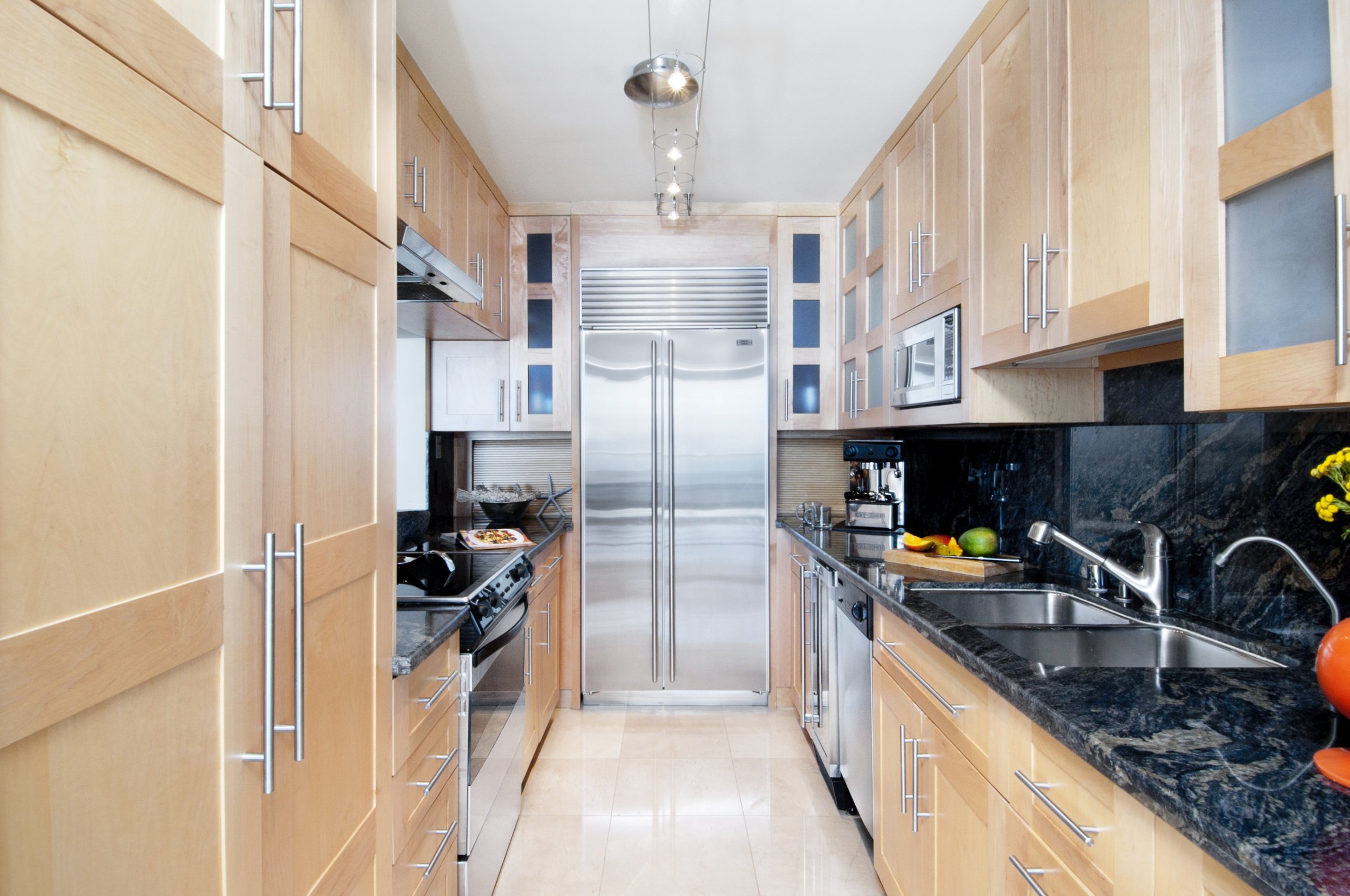
There's No Place Like a Healthy Home for the Holidays
This year is already coming to a close, so that means the holidays are just around the corner! This year has been a challenging one, so let’s spread some holiday cheer by following some simple, yet meaningful home design ideas to brighten up the holidays.
Reconsidered Rituals
Part of having a healthy, happy home is creating family traditions. An easy practice anyone can start implementing is home decorating for the holidays. No matter what your family celebrates, it is fun getting into the winter spirit! Decorating can be anything from fashioning a homemade wreath for your front door to making your own candles for your menorah. Many of us are celebrating the holiday season differently than we have in the past, creating an opportunity to incorporate new traditions. Exchanging ornaments and a handwritten note is a special way to connect with loved ones you may not be able to see in person this year. This simple act may help you feel closer to family far away!
Reuse, Recycle, Rejoice
Fabricating handmade winter decorations is a great activity for your entire family! A fun and simple idea is to string together your own felt garland. Felt balls can be found in nearly any color imaginable to match your family’s needs. So whether you want red, green, and black for Kwanzaa or blue and white for Hanukkah, the options are endless! Felt garland is not only pretty to look at, but is made from wool, an inherently renewable and recyclable material. We like sourcing wool from small sustainable farms where the sheep are treated like family.
Choosing decorations inspired by things you love all year round will help your decor seem more personal to your family. If you're a bird lover, use this as a starting point when decorating. Look to local artists or online shops who make bespoke decorations that fit the holiday theme of your choice.
If your family celebrates Hanukah, you may want to opt for beeswax candles for your menorah since they don't produce any toxic chemicals or soot. Or if you’d rather use a vegan alternative, there are now organic vegetable wax candles made specifically for menorah’s!
The Serotonin Schedule
Decorating for the holidays early may alleviate stress and anxiety. According to Business Insider, psychologists have found that those who decorate early are much happier because it helps you tap into the holiday excitement before everyone else and leaves you feeling less stressed come Christmas time. Additionally, you can use this time of year as an opportunity to slow down, tend to your home mindfully, and take that time to appreciate and enjoy your home design. Take stock of what you have, and cull any items for donations that no longer serve you. Connecting with and expressing gratitude for your home is a great first step of decorating that may be a grounding and mood-boosting experience.
The Indoor Forest
Biophilic design goes hand in hand with holiday home decor. Biophilia is our innate desire to be close to nature–and biophilic design aims to make healthy and comfortable interiors by meaningfully incorporating natural elements into our home design and work environments. A large component of holiday home decor is foliage. Greenery can be anything from a leafy garland on your mantle to mistletoe in your hallway. This holiday season, try decorating your home in more natural elements such as pinecones, nuts, and branches. If you live near a woody area you can forage for these items yourself, or if that isn’t an option for you, look to your local farmer’s market or nursery for help. Your house will feel like an organic winter wonderland full of crisp natural scents and foliage that's unique to your home.
Your incorporation of nature doesn't have to stop once the holidays are over - you can enjoy the benefits of biophilic home design all year round! Kale Tree Shop, founded by Sarah Barnard Design, is a great resource for nature inspired home goods. Each product takes inspiration from the natural world, ranging from abutilon wallpaper to ginkgo leaf wall sconces to upholstered chairs influenced by the silhouette of a great dane. Biophilic home design elements can bring joy and warmth to your home, no matter the season!
The Holiday Hormone Connection
Decorating for the holidays is not only fun, it can contribute to spikes in your dopamine levels, which is a hormone that boosts feelings of pleasure. One factor that leads to these enjoyable feelings are the bright lights and colors. Chromotherapy increases happiness and boosts your energy levels. Another prominent factor at play are all the cozy scents that come from Christmas trees, eucalyptus and pine scented candles, and homemade treats. So this year you may feel extra gratification when putting out holiday décor knowing that there may be real health benefits!
As you begin to prepare for the holidays, remember the importance of creating traditions with your family. Although the holidays may not be quite the same this year, surrounding yourself with winter décor that you thoughtfully sourced, may bring you some needed joy this season. So remember, think handmade, look to nature, and surround yourself with home design elements that make you happy, and you’ll have a beautiful winter wonderland right at home.
The Sarah Barnard Design family wishes you all the warmth and happiness!
Sarah Barnard is a WELL and LEED accredited designer and creator of environments that support mental, physical and emotional wellbeing. She creates highly personalized, restorative spaces that are deeply connected to art and the preservation of the environment. An advocate for consciousness, inclusivity, and compassion in the creative process, Sarah’s work has been recognized by Architectural Digest, Elle Décor, Real Simple, HGTV and many other publications. In 2017 Sarah was recognized as a “Ones to Watch” Scholar by the American Society of Interior Designers (ASID).
How an expertly designed home can be better than a luxury vacation
Forget about unexpected flight delays, cramped legroom, and coping with jet lag — this summer, consider channeling vacation vibes at home instead. Creative home design can make your bedroom feel like a five-star hotel or transform your backyard into a resort-style retreat; no reservation required.
Sarah Barnard Design, WELL AP + LEED AP, creates restorative, hospitable spaces reminiscent of her clients' favorite destinations. Here we reflect on four of her past travel-inspired projects to show how thoughtful home design can replicate the health benefits of taking a vacation.
Paris: Park View pied-à-terre
Perhaps the best part of staying in a luxury hotel is the luxurious sleep experience. While you might not be able to request turndown service, selecting a plush organic mattress, high-quality linens, hypoallergenic pillows, and sunlight-blocking window treatments can ensure a restful slumber every night of the week.
"An ideal sleeping space is serene, outfitted with natural materials, and maintains a visual connection to the outdoors," explains Sarah. "A completely natural bed can often provide improved air quality and make a marked improvement for chemically sensitive people and/or people who suffer from allergies."
For a Francophile at heart, Sarah designed the bedrooms of a park view pied-à-terre to resemble a boutique hotel in the 16th arrondissement, focusing on high thread-count sheets, soft, romantic lighting, curated artwork, and beautifully-arranged flowers. The antique-inspired furnishings were custom made by local craftspeople using non-toxic, sustainable materials.
Tulum: Serene Scandifornian
Being on vacation often means immersing yourself in nature, which benefits physical health and mental well-being. Establishing a connection to the outdoors, whether it be a verdant view through a kitchen window or an oil painting of a seascape, can boost your mood and brainpower, according to a 2001 study by University of Michigan psychology professor Rachel Kaplan.
Sarah brought Tulum's beachy-bohemian stylings to a Southern California family home by embracing neutral colors and oceanic motifs, including coral-inspired wall sconces and a custom concrete fireplace with wave-like etchings. The floor pillows provide a laid-back feel, while the live-edge coffee table is reminiscent of a piece of driftwood. Collected shells and a photorealist painting by Eric Zener add to the room's organic feel.
Cape Cod: Cape Cod Guest Retreat
If spending more time outdoors is at the top of your staycation to-do list, consider revamping your alfresco living space and summer garden. Tending to plants can cultivate happiness at the same rate as many common forms of exercise, according to a recent study published in the Landscape and Urban Planning academic journal. Plus, you can use the fruits of your labor to whip up a delicious meal or arrange a colorful centerpiece.
"Many clients are beginning to realize that there is a dramatic benefit to home design that nourishes our desire to be close to nature," explains Sarah.
The home designer helped the owner transform an urban backyard into a coastal New England getaway, complete with a guest cottage and private pool. Using the retreat's natural surroundings as a jumping-off point, Sarah incorporated botanical prints, earthy hues, and rich wood furniture.
Outside, weathered teak loungers covered with hand-printed outdoor textiles provide a comfortable spot to unwind by the pool. The lush gardens and meandering pathways give the backyard a sense of seclusion, making it feel like you're far away from the city's hustle and bustle.
Lake Como: California Mediterranean Estate
Beyond a comfy bed, the cornerstone of a memorable hotel stay is a spa-like bathroom. Practice self-care by investing in wellness features that soothe sore muscles, calm the nervous system and ensure a restful night's sleep. An interior designer can help you create a serene bathroom environment that caters to your specific health needs and makes you feel like you're on a mini-vacation.
For a couple who has spent many summers on Lake Como's shores, Sarah designed a sophisticated ensuite bathroom with a therapeutic soaker tub, steam shower, and heated floor tiles. Marble-framed windows provide proper ventilation and tranquil views of nature, complementing the streamlined vanity concealing a warming drawer for freshly-laundered towels.
The dripping chandeliers are befitting of a luxury villa on the Italian Riviera and provide layered lighting for applying makeup or simply soaking in the tub. "Lighting is a crucial component of good bathroom design and can help improve the human experience," notes Sarah.
While a week-long getaway might provide you with temporary pleasure and relaxation, beautiful and considered home design can make your space feel like a year-round sanctuary. Taking inspiration from your top travel destinations will evoke happy memories and allow you to reap the many health benefits of a vacation without ever leaving home.
Sarah Barnard, WELL AP and LEED AP, designs healthy, happy, personalized spaces that connect deeply to nature and art. Barnard has been featured in publications internationally and was named a "Ones to Watch Scholar" by the American Society of Interior Designers. Empathy and mindfulness are the foundation of her practice creating healing, supportive environments that enhance life.
Designing a Safe Space for an Autistic Child
Designing a calm environment for children with autism can seem like a daunting task. While every child is different and may react differently to specific situations, there are five key home design points to consider to successfully achieve a calm and structured space.
Layout
Consider the scale of the space. What do you want to integrate into the room? One way to successfully choose what you want to include in the place is knowing your child’s needs, and paying close attention to how your child responds to an environment. How do you want your child to navigate through the space? Start the layout by placing the furniture on the sides of the room and leaving the middle open to navigate. This layout is not only simple but easy for the child to move around the room. When placing the furniture on the sides, the child can easily access things he/she needs within the room, fostering independence.
Often children with autism are more comfortable in rooms with clear divisions. Consider subdividing rooms and allowing for reconfiguration. Plan secure storage for items so they can be cleared away quickly when not in use.
Noise
Noise is another aspect of designing a room that is often forgotten about but is essential when creating a space for a person with autism. Children with autism are sensitive to loud noises and sometimes cannot filter them out. This sensitivity may cause anxiety, affecting the way the child behaves daily. There are simple ways to prevent background noise from filtering in. Start by pinpointing what background noises you can easily hear from the room that may cause discomfort to your child.
Keep the background noise out by integrating small fixes. Try applying acoustic panels to your walls; this not only brings down the sound, but it can serve as a discrete and functional decorative element.
If the first option is not something that would be convenient, another way to bring the noise down would be to replace any hardwood flooring with carpet. Not only is this recommended for children with autism because it reduces the chance of your child getting hurt and prevents lighting glare, but it also prevents noise from echoing throughout the room.
If damping the noise is not possible, try adding pink noise. Similar to white noise, pink noise may improve memory and be better at gently drowning out disturbances.
Lighting
Lighting can have a substantial effect on someone’s mood. Just as we can be affected by specific light, children with autism are often hypersensitive, therefore specific lighting should be considered when integrating fixtures. One thing to stay away from is fluorescent lighting. Fluorescent lighting is known to flicker and depending on the wattage and lamp type can be extremely bright. The flickering is not only distracting, but it is known to cause eye strain, headaches, and migraines. Opt for a fixture with diffused lighting or an installation with adjustable settings in a neutral, unsaturated color. Being able to dim the light can make a difference for someone’s mood.
Color
Choosing the right color for the room is an essential step. Choose light, neutral colors. Just as bright lights can affect the mood of the child in a negative way, specific colors can have similar effects. Colors to stay away from are anything bold or dark. Although primary colors tend to be the norm when choosing room colors for children, it is not the case when choosing a room color for a child with autism. Bold colors are allowed in small accents, such as their toys.
Also, wallpapers with busy patterns or stripes can be distracting for your child. Be especially careful to choose a paint that is non-toxic and does not off-gas, to keep your child safe. Try pale blues, soft greens, light purples, and pale pinks for room color options.
Privacy
Research has shown the benefits of a sensory room (or space) for kids with autism. These spaces allow children to feel safe. You can integrate certain things into a sensory room for the child to feel better. As stated previously, layouts are essential. If it is not possible to dedicate an entire room, a corner of a room can be reserved specifically to be the "sensory room," by separating the space with a dark curtain. The idea is to make a place the child can feel comfortable and stress-free. Items such as a bean bag, or a sensory pea pod sold online can help a child feel comfortable and safe.
With these simple ideas in mind, your home can be a safe place for both you and your autistic loved one.
Photos by Chas Metivier, Steven Dewall
Sarah Barnard designs healthy, happy, personalized spaces that are deeply connected to nature and art.
To learn more about Sarah Barnard Design, please visit www.SarahBarnard.com.
Ocean View Penthouse: Contemporary Kitchen Style
Maple cabinets and natural granite pair with stainless steel hardware in this ocean view penthouse kitchen. The light maple cabinetry maintains a spacious, airy feeling in the petite modern kitchen. Matching barstools turn a kitchen cut-out into the perfect breakfast nook. The adjacent custom built-in desk provides a tidy corner for paying bills or reading recipes on the web.
Natural wood, rattan and stone accessories make this modern kitchen lively and fun. Cable system track lighting illuminates the natural stone counters and floors. The architectural cut-out around the stove beautifully integrates the kitchen with the rest of the space allowing for more natural light.
The kitchen seamlessly flows into the adjacent dining area where a custom table of chrome and maple sets against a wall of mirrors. Tillandsia plants make a perfect centerpiece for beachfront dining. This modern kitchen design fully utilizes the compact space while preserving an open and integrated feeling with the rest of the penthouse.
Sarah Barnard designs healthy, happy, personalized spaces that are deeply connected to nature and art.
To learn more about Sarah Barnard Design, please visit www.SarahBarnard.com.
Photos by Brad Nicol
Ocean View Penthouse: Contemporary Living Room
A coastal penthouse with a bird's eye view of the coastline is outfitted with eco-friendly furnishings, natural textiles and organic rugs to create a perfect Zen retreat. White fabric poufs provide extra seating for guests and are low enough to preserve the ocean view. A natural driftwood sculpture compliments a collection of organic objects as the centerpiece to this biophilic design.
Fine art can become a unique design element within a room. This one of a kind artwork fashioned from hand-thrown clay disks explicitly created for the living room captures the calming energy of the ocean air. The installation's delicate minimalism and organic formations add dimension and complement the room's natural textures.
Sustainably sourced organic textiles and fabrics adorn this custom sectional with natural latex cushions, a perfect companion to the organic wool rug and toss blanket. A modern white metal side table with a fun organic shape adds interest.
This modern design preserves the expansive coastline view while utilizing a wall of mirrors to extend the entertaining area visually. The integrated dining area features a custom table of chrome and maple perfectly sized for this compact space.
A collection of eco-friendly materials, organic textiles, and vintage accoutrements make this penthouse the ultimate beach retreat. The delicate chandelier made up of tiny light bulbs, and wire reminds us of stars strung together in the sky. Tillandsia plants make a perfect centerpiece for beachfront dining.
Sarah Barnard designs healthy, happy, personalized spaces that are deeply connected to nature and art.
To learn more about Sarah Barnard Design, please visit www.SarahBarnard.com.
Photos by Brad Nicol





































































